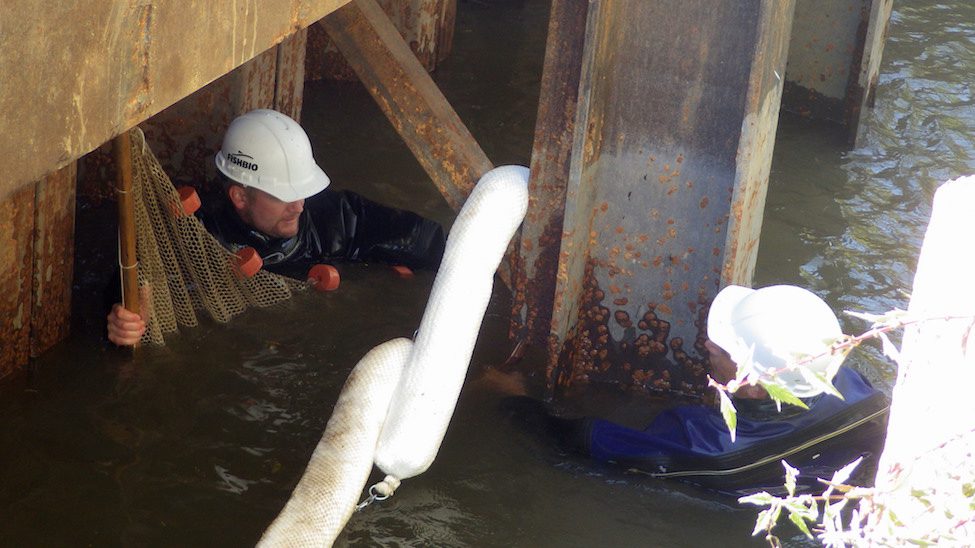Wednesday January 11, 2017
 While development can disturb waterways, in some cases it can be beneficial to fish. The Woodland-Davis Clean Water Agency has completed the construction of a modern, fish-friendly water diversion on the Sacramento River north of the City of Sacramento, which includes fish screens to prevent fish from getting sucked into the pumps. The screens are spread out over a large area to reduce water pressure, which helps prevent fish getting impinged on the screens. Our role in this endeavor was to remove fish from a cofferdam constructed to isolate the old, unscreened diversion pump so it could be removed. Donning dry suits and hard hats and armed with seine nets, we escorted fish in multiple passes from one end of the isolated pool out through the remaining opening in the cofferdam so it could be sealed off and construction initiated. We had to maneuver around the white oil absorbing devices shown in the photo above, which are deployed to absorb any oil from the construction machinery before it enters the river.
While development can disturb waterways, in some cases it can be beneficial to fish. The Woodland-Davis Clean Water Agency has completed the construction of a modern, fish-friendly water diversion on the Sacramento River north of the City of Sacramento, which includes fish screens to prevent fish from getting sucked into the pumps. The screens are spread out over a large area to reduce water pressure, which helps prevent fish getting impinged on the screens. Our role in this endeavor was to remove fish from a cofferdam constructed to isolate the old, unscreened diversion pump so it could be removed. Donning dry suits and hard hats and armed with seine nets, we escorted fish in multiple passes from one end of the isolated pool out through the remaining opening in the cofferdam so it could be sealed off and construction initiated. We had to maneuver around the white oil absorbing devices shown in the photo above, which are deployed to absorb any oil from the construction machinery before it enters the river.
Many people are unaware of the lengths to which contractors go in order to protect fish and wildlife during construction projects. Before construction begins, surveys are conducted to assess whether protected wildlife are residing or breeding in the project area. Efforts are made to exclude fish and wildlife from potential harm while construction occurs, and often a biological observer is present on the project site to monitor activities and ensure protected species have not moved into the project area. Fish removal efforts like this are usually not the most glamorous or easiest tasks for fish biologists, but are an essential part of protecting species during temporary construction activities.
